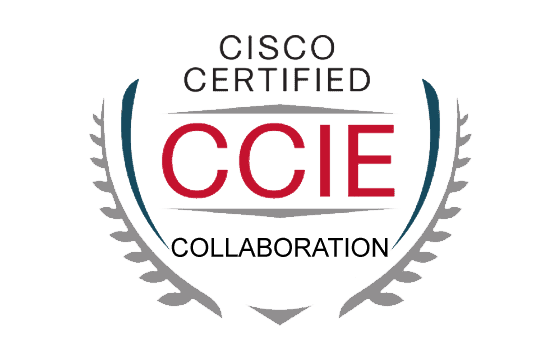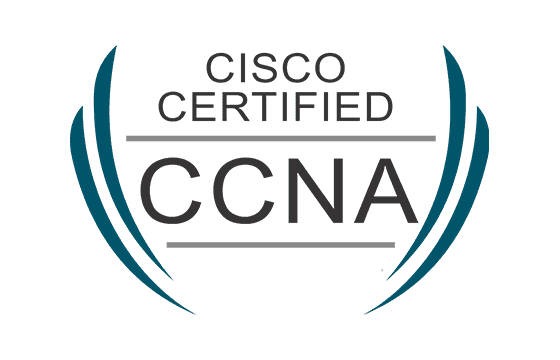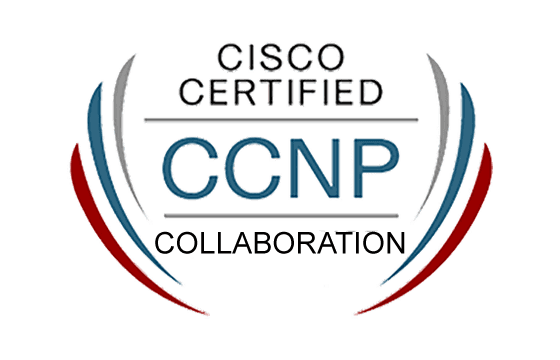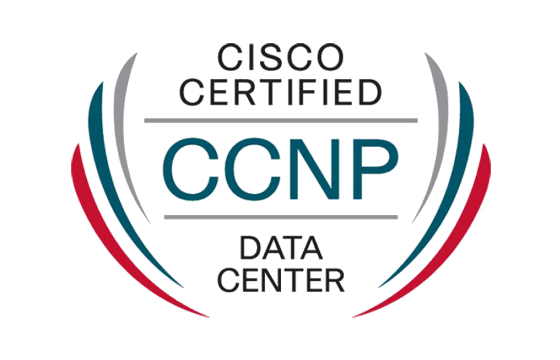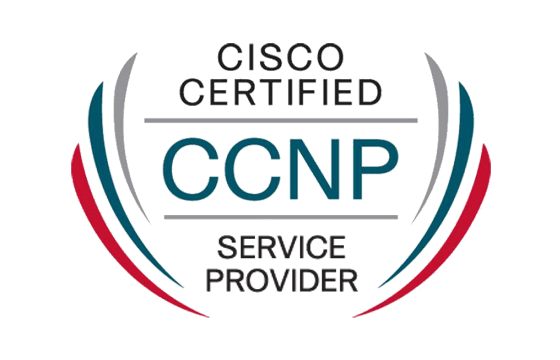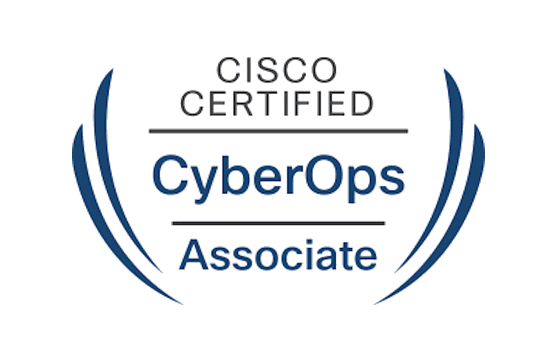Pass Your Cisco 642-436 Exam Easy!
Cisco 642-436 Exam Questions & Answers, Accurate & Verified By IT Experts
Instant Download, Free Fast Updates, 99.6% Pass Rate
This exam was replaced by Cisco with 642-437 exam
Archived VCE files
| File | Votes | Size | Date |
|---|---|---|---|
File Cisco.TestInside.642-436.v2010-11-26.by.VGN.72q.vce |
Votes 1 |
Size 2.73 MB |
Date Nov 28, 2010 |
File Cisco.TestInside.642-436.v2010-09-08.by.BretfortAtGmail.79q.vce |
Votes 1 |
Size 2.77 MB |
Date Sep 07, 2010 |
File Cisco.SelfTestEngine.642-436.v2010-02-27.by.Carles.82q.vce |
Votes 1 |
Size 2.23 MB |
Date Mar 10, 2010 |
Cisco 642-436 Practice Test Questions, Exam Dumps
Cisco 642-436 (Cisco Voice over IP (CVOICE)) exam dumps vce, practice test questions, study guide & video training course to study and pass quickly and easily. Cisco 642-436 Cisco Voice over IP (CVOICE) exam dumps & practice test questions and answers. You need avanset vce exam simulator in order to study the Cisco 642-436 certification exam dumps & Cisco 642-436 practice test questions in vce format.
The Cisco 642-436 CVOICE Exam: An In-Depth Introduction
The Cisco 642-436 CVOICE exam was a cornerstone professional-level certification test for network engineers specializing in voice technologies. It served as a critical component of the highly respected Cisco Certified Voice Professional (CCVP) certification track. The exam was meticulously designed to validate a candidate's comprehensive understanding of foundational Voice over IP (VoIP) principles. This included the intricate processes of VoIP call establishment, the logic behind designing and implementing dial plans, and the configuration of essential network components. Successfully passing the 642-436 exam demonstrated a robust knowledge of how to integrate voice traffic onto an IP network.
This examination rigorously tested the skills required to deploy and manage Cisco voice solutions effectively. Candidates were expected to grasp the nuances of voice packetization, signaling protocols, and quality of service mechanisms. The 642-436 curriculum covered the implementation of gateways, which act as translators between traditional telephony and IP networks. Furthermore, it delved into the role of gatekeepers for call admission control and routing, as well as the function of IP-to-IP gateways for connecting disparate VoIP environments. This exam was not merely a theoretical test but a validation of practical skills essential for a voice engineer.
The Historical Context of the CCVP Certification
The Cisco Certified Voice Professional, or CCVP, certification was the premier credential for voice engineers during its tenure. It signified an advanced level of expertise in designing, implementing, and troubleshooting complex enterprise voice networks built on Cisco technologies. The 642-436 CVOICE exam was just one of several exams required to achieve this elite status. The CCVP track was structured to build upon the foundational knowledge of a Cisco Certified Network Associate (CCNA), requiring candidates to first prove their fundamental networking skills before diving into the complexities of voice.
Achieving CCVP certification was a significant career milestone. It opened doors to specialized roles and distinguished individuals as experts in the field of IP telephony. The certification curriculum, including the 642-436 exam, was comprehensive, covering Cisco Unified Communications Manager (formerly CallManager), quality of service (QoS), gateway and gatekeeper configuration, and troubleshooting methodologies. The CCVP certification was a clear indicator to employers that a professional possessed the necessary skills to manage the transition from traditional PBX systems to modern, scalable VoIP solutions, a critical business objective for many organizations at the time.
Core Foundational Elements Tested in the 642-436
The 642-436 CVOICE exam placed significant emphasis on the foundational elements of VoIP calls. A core concept tested was the process of voice digitization and packetization. Candidates needed to understand how analog voice signals are converted into digital data using codecs like G.711 and G.729. This involved understanding the trade-offs between codec complexity, bandwidth consumption, and perceived voice quality. The exam required a deep knowledge of how these digital voice streams are then encapsulated into Real-time Transport Protocol (RTP) packets for transmission across an IP network.
Another fundamental area was the mastery of signaling protocols. The 642-436 exam covered the dominant protocols of its era, including H.323 and the Media Gateway Control Protocol (MGCP). Candidates had to understand the architecture and call flows for each protocol. For H.323, this meant knowing the roles of terminals, gateways, and gatekeepers. For MGCP, it required understanding its centralized, master-slave architecture. The exam also introduced the Session Initiation Protocol (SIP), which was rapidly gaining prominence, ensuring that certified professionals were prepared for the future of voice signaling.
Understanding Dial Plans: A 642-436 Perspective
A dial plan is essentially the brain of a voice network, responsible for routing calls intelligently and efficiently. The 642-436 CVOICE exam dedicated a substantial portion of its curriculum to the art and science of dial plan design. This went far beyond simply assigning extension numbers. It involved creating a scalable and logical numbering scheme that could accommodate growth and integrate seamlessly with the Public Switched Telephone Network (PSTN). Candidates were tested on their ability to create hierarchical and structured dial plans that were easy to manage and troubleshoot.
The implementation of dial plans on Cisco IOS gateways was a critical practical skill measured by the 642-436 exam. This involved the in-depth configuration of dial peers, which are the building blocks of call routing logic on these devices. Candidates needed to master the configuration of both POTS (Plain Old Telephone Service) dial peers for traditional telephony connections and VoIP dial peers for IP-based call legs. Understanding how the gateway matches digits, selects the appropriate dial peer, and forwards the call was paramount to success on the exam and in the field.
The Role of Gateways and Gatekeepers
Voice gateways are indispensable devices that bridge the gap between the IP world and the traditional telephony world. The 642-436 CVOICE exam ensured that candidates could confidently implement and manage these critical components. The curriculum covered the configuration of various gateway interfaces, including analog ports like FXS and FXO for connecting phones and PSTN lines, as well as digital T1 and E1 ports for high-density connections using ISDN PRI or CAS signaling. A thorough understanding of these technologies was non-negotiable.
Gatekeepers, specifically within the H.323 protocol suite, serve a vital call control function. The 642-436 exam tested a candidate's ability to implement a Cisco IOS Gatekeeper to manage VoIP traffic effectively. A key role of the gatekeeper is Call Admission Control (CAC), which prevents the oversubscription of network bandwidth on WAN links, thereby protecting voice quality. Gatekeepers also provide address resolution, translating phone numbers or aliases into IP addresses, and play a central role in routing calls between different H.323 zones, making their configuration a crucial skill for voice engineers.
IP-IP Gateways: Connecting VoIP Islands
In many enterprise networks, different VoIP systems or "islands" may exist that need to communicate with each other. This is where the concept of an IP-to-IP gateway becomes essential, a topic thoroughly covered in the 642-436 CVOICE curriculum. An IP-to-IP gateway, often a function performed by a Cisco router, can mediate calls between two separate VoIP networks. This could be necessary for connecting two corporate locations that use different call control platforms or for interconnecting with a service provider's VoIP network.
The functionality of an IP-to-IP gateway is multifaceted. It can perform protocol interworking, for instance, translating a call from H.323 signaling on one side to SIP signaling on the other. It can also handle differences in codec usage, performing transcoding to convert a G.711 voice stream to a G.729 stream to conserve bandwidth over a WAN link. The 642-436 exam required candidates to understand these use cases and configure a router to perform these functions, ensuring seamless communication across diverse IP telephony environments. This technology was a precursor to modern Session Border Controllers (SBCs).
From CCVP to CCNP Collaboration
The technology landscape is in a constant state of evolution, and professional certifications must adapt to remain relevant. The CCVP certification, along with the 642-436 CVOICE exam, was eventually retired by Cisco. It was replaced by the more modern and comprehensive CCNP Collaboration certification. This transition reflected the industry's shift from pure VoIP to a broader unified communications (UC) and collaboration ecosystem. The new track expanded its focus beyond voice to include video, messaging, and presence technologies, providing a more holistic skillset.
While the names and exam numbers have changed, the foundational knowledge validated by the 642-436 exam remains incredibly relevant. The core principles of dial plans, codecs, signaling protocols, and gateway operation are still at the heart of modern collaboration solutions. The CCNP Collaboration track builds upon these fundamentals, applying them to the latest versions of Cisco Unified Communications Manager, Cisco Unity Connection, and other collaboration applications. Understanding the journey from CCVP to CCNP Collaboration provides valuable insight into the growth and maturation of the voice and unified communications industry over the years.
Why Understanding the 642-436 Exam Still Matters
One might question the value of studying a retired exam like the 642-436 CVOICE. However, the core principles it taught are timeless in the world of network engineering. The fundamental physics of converting sound to data, the logic of call routing, and the need for quality of service do not change, even as the products and protocols evolve. Understanding the material from the 642-436 exam provides a rock-solid foundation that makes learning modern collaboration technologies significantly easier. It provides the "why" behind many of the configurations used today.
For engineers troubleshooting complex voice issues, this foundational knowledge is often the key to solving the problem. A deep understanding of H.323 or MGCP call flows can help diagnose issues with legacy equipment that may still be present in an enterprise network. Furthermore, the rigorous approach to dial plan design and gateway configuration taught in the 642-436 curriculum instills best practices that are still applicable when deploying modern solutions like the Cisco Unified Border Element (CUBE). In essence, the 642-436 exam represents a masterclass in the fundamentals of VoIP engineering.
The Anatomy of a Voice over IP Call
To truly master the concepts of the 642-436 CVOICE exam, one must first understand the complete lifecycle of a VoIP call. This process can be broken down into two primary components: call signaling and the media stream. Call signaling is the process of setting up, managing, and tearing down the call. It is the conversation about the call, handled by protocols like H.323, SIP, or MGCP. This phase involves locating the called party, negotiating parameters like which codec to use, and ringing the destination phone. The 642-436 exam required a detailed understanding of these signaling interactions.
Once the call is established through signaling, the media stream begins. This is the actual conversation, consisting of voice data packets flowing between the two endpoints. This media stream is almost universally carried by the Real-time Transport Protocol (RTP). RTP is designed to handle time-sensitive traffic like voice and video. It provides mechanisms such as timestamps and sequence numbers to help the receiving end reconstruct the audio stream correctly and compensate for network impairments like jitter. The 642-436 curriculum demanded a clear understanding of the distinction and relationship between the signaling path and the media path.
Mastering Voice Codecs and Digitization
At the heart of VoIP is the process of converting the human voice from an analog sound wave into digital data that can be transmitted over a network. This conversion is performed by a component called a codec, which is short for coder-decoder. The 642-436 CVOICE exam tested candidates on the characteristics of the most common voice codecs used in the industry. The choice of codec is a critical design decision, as it represents a fundamental trade-off between the amount of bandwidth consumed and the resulting audio quality.
The most basic codec, G.711, is essentially an uncompressed representation of the voice signal, offering high fidelity at the cost of higher bandwidth (around 64 kbps per call). In contrast, codecs like G.729 use complex compression algorithms to significantly reduce the bandwidth requirement to around 8 kbps, but with a slight reduction in audio quality. The 642-436 exam required engineers to know when to use each type of codec. For example, G.711 is typically used on a high-speed local area network (LAN), while a compressed codec like G.729 is preferred for calls traversing a slower wide area network (WAN) link.
Signaling Protocols: H.323 in Focus
The H.323 protocol suite was a major focus of the 642-436 CVOICE exam. Developed by the International Telecommunication Union (ITU), H.323 is a comprehensive and relatively complex standard that defines how multimedia communications occur over packet-based networks. It is not a single protocol but rather a framework of protocols that work together. The key components within an H.323 network include terminals (the endpoints, like IP phones), gateways (for PSTN integration), and gatekeepers (for call control and admission control).
Understanding the call flow within an H.323 environment was a critical skill. In a gatekeeper-controlled environment, an endpoint wishing to make a call would first send an Admission Request (ARQ) to the gatekeeper. The gatekeeper, responsible for managing bandwidth and routing policies, would respond with an Admission Confirm (ACF) if the call was permitted. The endpoints would then proceed with the call setup process using H.225 signaling and open media channels using H.245 negotiation. This structured, controlled approach made H.323 a robust choice for many early enterprise VoIP deployments, and mastering its intricacies was essential for the 642-436 exam.
Exploring MGCP and its Centralized Control Model
Another important signaling protocol covered in the 642-436 CVOICE exam was the Media Gateway Control Protocol (MGCP). MGCP operates on a fundamentally different architectural model compared to H.323. It employs a centralized, master-slave architecture where the intelligence of the network resides in a central call control agent, referred to as a Call Agent (like Cisco Unified Communications Manager). The endpoints and gateways are "dumb" devices that simply execute commands sent by this central brain. This model is often described as a "thin device, fat controller" approach.
This centralized model simplifies the management of gateways and endpoints, as they do not need to contain complex call routing logic themselves. The Call Agent instructs the gateway on everything, from how to signal the PSTN to which IP address to send the RTP media stream. The 642-436 exam required candidates to understand the MGCP command structure and how a Call Agent would use it to control a gateway to establish a call. This knowledge was crucial for integrating Cisco gateways into a centrally managed Cisco Unified Communications Manager environment.
The Rise of SIP: A Primer for the 642-436 Era
While H.323 and MGCP were dominant in early VoIP, the Session Initiation Protocol (SIP) was rapidly emerging as the future standard, and the 642-436 CVOICE exam included it in its curriculum to ensure candidates were forward-looking. SIP was developed by the Internet Engineering Task Force (IETF) and draws heavily from other internet protocols like HTTP. It is a more lightweight and flexible text-based protocol, which contributed to its widespread adoption. SIP is not a monolithic suite like H.323 but a single protocol focused on signaling.
SIP operates on a request-response model similar to a web browser. A SIP User Agent Client (UAC) initiates a request, such as an INVITE to start a call, and a User Agent Server (UAS) responds. The 642-436 exam focused on the fundamental concepts of SIP, including its core messages (like INVITE, ACK, BYE) and the roles of key network elements like proxy servers and redirect servers. This foundational SIP knowledge was essential for engineers who would increasingly need to interconnect their Cisco voice networks with SIP-based service provider networks and other third-party systems.
Real-time Transport Protocol (RTP) and RTCP
While signaling protocols set up the call, the Real-time Transport Protocol (RTP) does the heavy lifting of carrying the actual voice conversation. As its name implies, RTP is designed for real-time applications where timely delivery is more important than guaranteed delivery. It operates over UDP (User Datagram Protocol) because the overhead of TCP's retransmission mechanisms would introduce unacceptable delay for a live conversation. The 642-436 exam required a solid understanding of RTP's role and its header components.
Working alongside RTP is the RTP Control Protocol (RTCP). While RTP carries the media, RTCP carries information about the media stream. RTCP packets are sent periodically between the call participants and provide out-of-band statistics. This includes information on packet count, packet loss, jitter, and round-trip delay. This feedback is invaluable for Quality of Service (QoS) monitoring and allows applications to dynamically adapt to changing network conditions. The 642-436 curriculum emphasized the symbiotic relationship between RTP and RTCP in maintaining high-quality VoIP communication.
Quality of Service (QoS) for Voice
Voice traffic is extremely sensitive to network impairments. Unlike data traffic, which can tolerate some delay, voice conversations become unintelligible if packets are delayed, lost, or arrive out of order. This is why Quality of Service (QoS) is not an optional luxury for a VoIP network; it is an absolute necessity. The 642-436 CVOICE exam tested a candidate's understanding of the key QoS challenges—latency, jitter, and packet loss—and the tools used to mitigate them.
To ensure voice quality, voice packets must be identified, classified, and given preferential treatment as they traverse the network. This involves marking voice traffic with a high-priority value (using techniques like DSCP marking) and configuring network devices to act on these markings. Queuing mechanisms, such as Low Latency Queuing (LLQ), are then used on routers and switches to create an express lane for the voice traffic, ensuring it is not delayed by large data transfers. A comprehensive grasp of these QoS mechanisms was a fundamental requirement for any engineer preparing for the 642-436 exam.
The Philosophy of Dial Plan Design
Effective dial plan design is both a technical skill and an art form, a central theme of the 642-436 CVOICE exam. The core philosophy is to create a numbering plan that is structured, scalable, and simple for users to understand. A well-designed dial plan provides seamless call routing for internal calls, external calls to the Public Switched Telephone Network (PSTN), and calls between different corporate sites. It should be logical and consistent across the entire organization, regardless of its size or geographical distribution.
Scalability is a primary concern. The dial plan must be able to accommodate future growth without requiring a complete and disruptive re-design. This often involves using a hierarchical structure with site codes, departmental codes, and individual extension numbers. Simplicity for the end-user is also paramount. Users should not need to remember complex codes to dial a colleague in another office. The 642-436 exam pushed candidates to think like network architects, planning for the long-term health and manageability of the voice network through intelligent dial plan construction.
Numbering Plans: Private and Public Integration
A key challenge in dial plan design, and a topic tested in the 642-436 exam, is the successful integration of the internal, private numbering plan with the external, public numbering plan (the PSTN). Internally, organizations have the flexibility to use a fixed-length numbering scheme, such as four or five-digit extensions. This provides consistency and makes inter-office dialing straightforward. However, to call the outside world, these internal numbers must be manipulated and mapped to fully qualified public telephone numbers.
This integration requires careful planning. For outbound calls, the system must be able to identify when a user is dialing an external number, strip any access codes (like the digit '9'), and forward the appropriate number to the PSTN. For inbound calls, the system must map an incoming public number (a DID, or Direct Inward Dial number) to a specific internal extension. The 642-436 curriculum required engineers to master the techniques for managing this two-way translation, ensuring a seamless calling experience for both internal and external parties.
Dissecting Dial Peers on Cisco IOS Gateways
On a Cisco IOS gateway, the dial peer is the fundamental configuration element that controls call routing. It is impossible to pass the 642-436 CVOICE exam without a deep and practical understanding of dial peers. A dial peer is a software entity that defines the attributes of a call leg, which is a discrete segment of a call connection. For a simple phone call from an IP phone to the PSTN through a gateway, there are two call legs: one from the IP phone to the gateway, and one from the gateway to the PSTN.
There are two main types of dial peers: POTS dial peers and VoIP dial peers. POTS dial peers are used for calls that terminate on a traditional telephony interface, like an analog FXO port or a digital T1/E1 port connected to the PSTN. VoIP dial peers are used for calls that are sent over the IP network to another IP-based device, such as an IP phone or another gateway. The 642-436 exam required candidates to be experts in configuring both types, understanding how the gateway matches a dialed number to a specific dial peer to make a routing decision.
Digit Manipulation Techniques
Real-world dial plans rarely allow numbers to be passed through the network unchanged. Often, numbers need to be modified to meet the specific requirements of the next device in the call path. The 642-436 CVOICE exam tested several techniques for performing this digit manipulation. For instance, when a user dials an internal extension, the system might need to expand that number into a full E.164 public number before sending it out to the PSTN. Conversely, an incoming public number might need to have digits stripped before it is presented to an internal phone system.
Cisco IOS gateways provide powerful tools for this purpose. Translation rules and translation profiles allow an administrator to create complex rules for modifying both calling and called numbers. For example, a rule could be created to prefix a site code and an area code to a four-digit extension for calls between offices over the WAN. Another rule could strip an international access code and replace it with the format expected by a specific carrier. Mastering these digit manipulation techniques was a key skill for building flexible and powerful dial plans.
Call Routing Logic and Path Selection
When a Cisco gateway receives a call, it begins a specific process to determine where to send it. This logic was a core component of the 642-436 CVOICE curriculum. The gateway takes the dialed number and attempts to match it against the destination-pattern configured on its various dial peers. It will check all potential matches and build a list of possible outbound call legs. This process ensures that the gateway considers all valid paths for a call.
If multiple dial peers match the dialed number, the gateway needs a way to decide which one to use. By default, it will choose the dial peer with the most specific match (the one with the longest matching destination-pattern). However, administrators can influence this decision-making process by configuring a preference value on each dial peer. The gateway will then prioritize the dial peer with the lowest preference value. Understanding this path selection logic is crucial for designing predictable and resilient call routing behaviors.
Implementing Class of Restriction (COR)
In any enterprise voice network, it is necessary to control which users have access to which calling features. For example, not all employees may need the ability to make expensive international calls. This level of access control is known as Class of Restriction (COR), and its implementation on Cisco IOS gateways was a testable topic on the 642-436 CVOICE exam. COR provides a flexible and powerful way to enforce calling policies and manage telecommunications costs.
COR works by assigning tags to both incoming and outgoing dial peers. An incoming call leg is assigned a COR list, which defines its capabilities. For the call to be successfully extended to an outgoing dial peer, the COR list of the incoming leg must be a superset of the COR list on the outgoing leg. In simpler terms, the incoming call must have the "permission" required by the outbound route. This allows an administrator to create different tiers of service, such as "Internal Calls Only," "Local and Long Distance," and "Unrestricted," and assign them to different groups of users.
Gatekeeper Call Routing and Address Resolution
In an H.323 network that uses a gatekeeper, the call routing logic is centralized. The 642-436 CVOICE exam required engineers to understand how a gatekeeper influences the call routing process. When an endpoint wants to make a call, it sends the dialed E.164 number to the gatekeeper. The gatekeeper's primary job is to perform address resolution: it looks up the E.164 number and resolves it to the IP address of the destination endpoint or gateway.
The gatekeeper uses zone prefixes to manage this routing logic. It can be configured with specific E.164 prefixes and told which gateway or endpoint is responsible for handling calls to those numbers. For example, the gatekeeper might know that all numbers starting with the +1-408 prefix should be routed to the gateway in the San Jose office. This centralized approach simplifies the configuration on the individual gateways, as they no longer need to maintain a complete picture of the entire network's dial plan. They can simply query the gatekeeper for routing instructions.
The Indispensable Role of Voice Gateways
Voice gateways are the essential translators of the VoIP world, a concept central to the 642-436 CVOICE exam. Their primary function is to convert voice traffic from one format to another. Most commonly, they serve as the bridge between the modern IP network and the legacy Public Switched Telephone Network (PSTN). When a user on an IP phone calls a traditional telephone number, the gateway is responsible for converting the IP-based RTP packets into the time-division multiplexing (TDM) format used by the PSTN, and vice versa.
The 642-436 CVOICE exam emphasized that gateways handle more than just the media stream; they also translate signaling. For example, a gateway might receive a SIP INVITE message from the IP network and need to translate that into an ISDN Q.931 SETUP message to send to the PSTN. This dual role of media and signaling translation makes the gateway a critical and complex component. A deep, practical understanding of how to configure and troubleshoot these devices was a mandatory skill for any engineer pursuing the CCVP certification.
Configuring Digital T1 and E1 Voice Ports
For connecting an enterprise voice network to the PSTN or a traditional PBX, high-density digital circuits are often used. The 642-436 CVOICE exam required candidates to be proficient in configuring T1 and E1 voice interfaces on Cisco routers. A T1 circuit, common in North America and Japan, provides 24 channels, while an E1 circuit, used in Europe and other parts of the world, provides 32 channels. These circuits use TDM to carry multiple conversations simultaneously over a single physical connection.
Configuration involves several layers. First, the physical T1/E1 controller must be configured with parameters like framing and line coding. Next, the channels must be grouped together into a TDM group. Finally, the signaling protocol must be defined. This is typically ISDN PRI (Primary Rate Interface), which uses one channel for signaling and the rest for voice, or CAS (Channel Associated Signaling), where signaling information is "robbed" from each individual voice channel. The 642-436 exam tested the command-line expertise needed to bring these complex circuits into service.
Configuring Analog Voice Ports (FXS and FXO)
While digital circuits handle high-density connections, analog ports are essential for connecting individual legacy devices. The 642-436 CVOICE curriculum covered the two main types of analog voice ports: FXS and FXO. Understanding the difference is fundamental. An FXS (Foreign Exchange Station) port is the port that supplies the service, providing battery power, dial tone, and ringing voltage. It is the type of port you would plug a standard analog telephone or fax machine into.
An FXO (Foreign Exchange Office) port, on the other hand, is the port that receives the service. It is designed to connect to a line from the telephone company, essentially emulating an analog telephone. An FXO port is used to connect a gateway to a standard analog PSTN line. The 642-436 exam required candidates to know not only the physical differences but also the specific configuration commands for each port type, including setting up signaling methods and managing caller ID information, to successfully integrate analog devices into a VoIP network.
Introduction to H.323 Gatekeeper Implementation
In a distributed H.323 network, a gatekeeper acts as a central point of control, and its implementation was a key topic in the 642-436 CVOICE exam. A Cisco router can be configured to perform the role of an H.323 gatekeeper, providing several critical services to the voice network. One of its primary functions is endpoint registration. H.323 gateways and terminals are configured with the IP address of their gatekeeper and register with it upon startup, allowing the gatekeeper to build a directory of all available voice devices.
The gatekeeper organizes its registered endpoints into logical groups called zones. A single gatekeeper can manage one or more zones. For larger networks, multiple gatekeepers can be configured to manage different zones and peer with each other to provide routing information for inter-zone calls. This creates a scalable, hierarchical call control architecture. The 642-436 exam tested the ability to define zones, configure endpoint registration, and establish the foundational elements of a gatekeeper-controlled H.323 network.
Call Admission Control (CAC) Strategies
Perhaps the most critical function of a gatekeeper, and a major focus of the 642-436 exam, is Call Admission Control (CAC). The goal of CAC is to protect the quality of active voice calls by preventing the network from becoming over-congested. This is especially important across low-speed Wide Area Network (WAN) links, where bandwidth is a precious resource. The gatekeeper is configured with the total amount of bandwidth available for voice calls between its zones.
When a new call is attempted, the endpoint must first ask the gatekeeper for permission via an Admission Request (ARQ). The gatekeeper checks its current bandwidth usage. If there is sufficient capacity available for the new call based on the codec being used, it grants the request. If not, it denies the request, and the caller typically receives a fast busy signal. This prevents the WAN link from being oversubscribed, which would cause packet loss and jitter, degrading the quality of all active calls. Mastering CAC was essential for building reliable enterprise VoIP networks.
Understanding IP-to-IP Gateway Functionality
The 642-436 CVOICE exam also explored the role of a router as an IP-to-IP gateway. This is a specialized function where the gateway receives a VoIP call from one IP network segment and forwards it to another, performing translation services in the process. This is distinct from a traditional gateway that connects to the PSTN. An IP-to-IP gateway, also known as an IP-to-IP router, lives entirely within the IP world, mediating sessions between different VoIP endpoints or systems.
Common use cases include protocol interworking and codec transcoding. For example, a company might need to connect its legacy H.323 video conferencing system with a new SIP-based telephony platform. An IP-to-IP gateway can be placed between them to translate the signaling from one protocol to the other. Similarly, if one part of the network uses G.711 and another requires G.729 to conserve bandwidth, the gateway can transcode the RTP stream in real-time. This functionality formed the basis for modern Session Border Controllers.
The Emergence of Cisco Unified Border Element (CUBE)
While the term was not heavily emphasized in the original 642-436 CVOICE exam, the IP-to-IP gateway functionality described in the curriculum was the direct precursor to what is now known as the Cisco Unified Border Element, or CUBE. CUBE is a specific software feature set on a Cisco router that provides a robust and secure Session Border Controller (SBC) solution. It has become the standard way to connect an enterprise's Cisco collaboration network to a SIP-based service provider trunk.
CUBE performs all the functions of a classic IP-to-IP gateway, such as protocol interworking and transcoding, but it adds many more advanced features. It provides a critical security demarcation point, hiding the internal network topology from the outside world. It can normalize SIP signaling to resolve incompatibilities between different vendor implementations and provide advanced call routing capabilities. Understanding the foundational IP-to-IP gateway concepts from the 642-436 exam provides a perfect stepping stone to mastering the configuration of the modern and powerful CUBE.
Go to testing centre with ease on our mind when you use Cisco 642-436 vce exam dumps, practice test questions and answers. Cisco 642-436 Cisco Voice over IP (CVOICE) certification practice test questions and answers, study guide, exam dumps and video training course in vce format to help you study with ease. Prepare with confidence and study using Cisco 642-436 exam dumps & practice test questions and answers vce from ExamCollection.
Top Cisco Certification Exams
- 200-301
- 350-401
- 300-410
- 350-701
- 300-715
- 820-605
- 350-601
- 300-710
- 300-420
- 300-415
- 300-425
- 200-901
- 350-501
- 700-805
- 350-901
- 300-620
- 300-730
- 350-801
- 200-201
- 400-007
- 300-435
- 350-201
- 500-220
- 300-810
- 300-430
- 300-815
- 100-150
- 300-515
- 300-610
- 300-440
- 300-820
- 300-510
- 100-140
- 300-735
- 300-910
- 300-720
- 300-215
- 300-615
- 300-635
- 700-250
- 300-725
- 300-535
- 500-560
- 500-443
- 700-750
Site Search:




